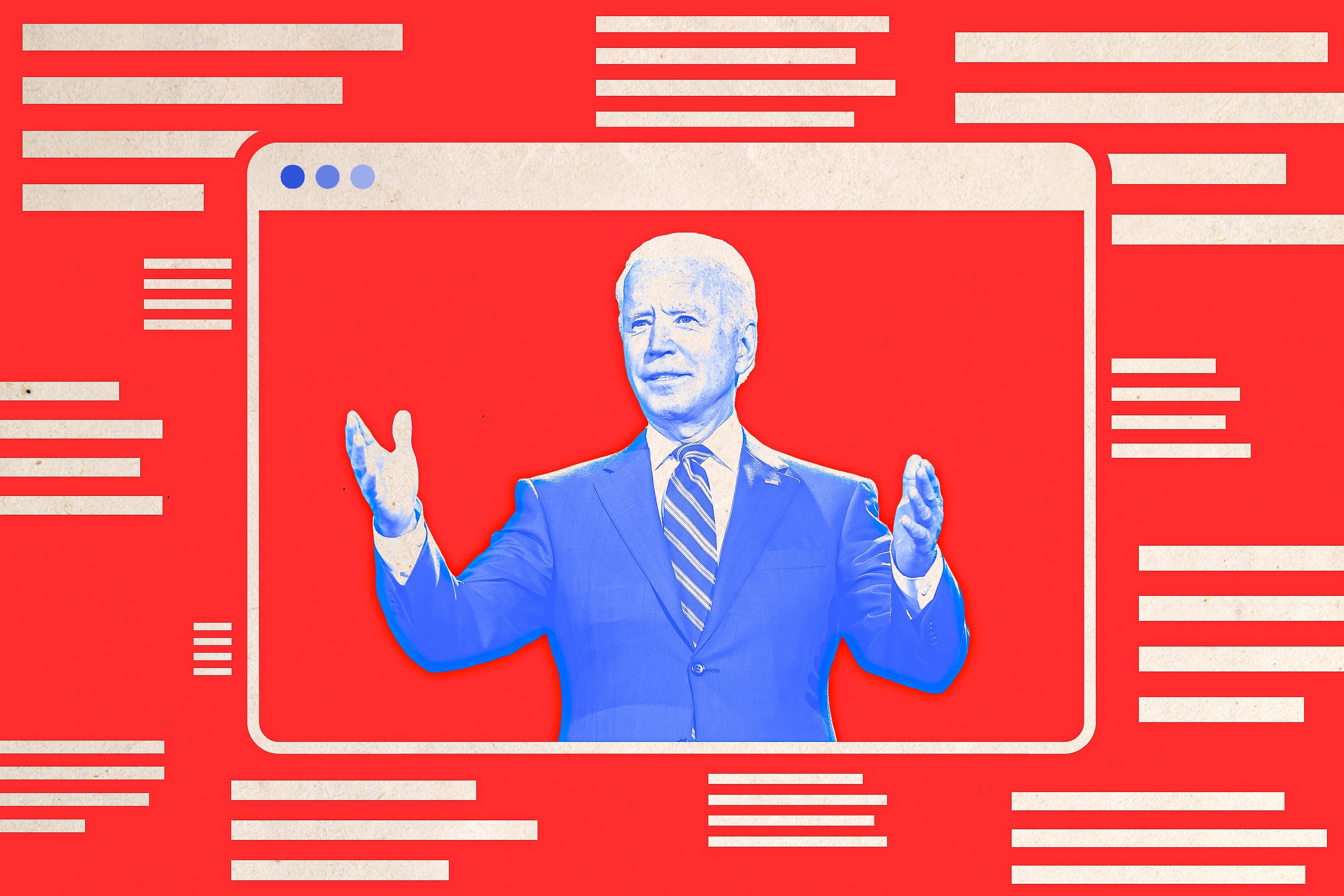
As recently as February, many Democrats feared a contested convention: the superdelegates, in league with former New York City mayor Mike Bloomberg, would overthrow Vermont Senator Bernie Sanders in a floor vote, or something.
This was before former vice president Joe Biden upset Sanders and won his party’s 2020 presidential nomination by a decisive margin in the delegate totals, thus preempting the revolutionary and/or counterrevolutionary chaos. But then, in April, rather than escalating his victorious campaign into the general election, Biden disappeared. Having overcome his main rival, Sanders, in the presidential primaries, Biden retreated to his home in Wilmington, Delaware, stranded as the earliest coronavirus lockdowns limited his general election campaign against President Donald Trump. Despite his most trollish efforts, Trump struggled to launch his own campaign against Biden as the pandemic, and the president’s mismanagement, shredded his reelection playbook. Currently, Biden leads Trump by double digits in national polls. As the TV ratings for his coronavirus briefings went “through the roof,” Trump foundered in continuous prime time. Meanwhile, Biden settled into his bunker at the suburban edge of the news cycle, reserving his gaffes for the morning talk shows. He taped interviews. He launched a podcast. He stalled. But sooner or later, Biden’s critics in both parties expected to see the former vice president stumbling back into prime time, his gaffes pronounced and his weaknesses illuminated once more.
This week, Democrats reconvened to nominate Biden and his running mate, California Senator Kamala Harris, for the party’s presidential ticket. They’d planned to meet in Milwaukee, but the coronavirus resurgence nixed the traditional format of 50,000 tourists gathering in an arena for four days. So now the 2020 Democratic National Convention more resembles a telethon. Eva Longoria, Tracee Ellis Ross, and Kerry Washington have each hosted a night, pacing a boxed stage and cutting to the featured speakers in isolation: Dr. Jill Biden wandering an empty school, Elizabeth Warren standing in a kindergarten classroom, John Kerry speaking from a dark and stately precipice, Bernie Sanders addressing the convention from a hotel lobby filled with lumber. The producers patch voters and activists into teleconference collages on screens, designed to compensate for the absence of a live, massive, and passionate audience that can stand and applaud the party’s leadership. How much pride can loyalists take in these weird simulations? What are politicians without the conventional applause?
It’s easy for critics to mock the jankiness of these digital contingencies. It’s even easier for viewers to tune out: Prime-time TV ratings for the convention dropped 28 percent compared to the 2016 Democratic National Convention, and that’s despite the general surge in TV viewership since the earliest lockdowns in March. There’s little reassurance in watching a major political party’s decision-making these days. And now there’s none of the live, massive, passionate applause which might reinvigorate a prime-time viewer regardless. On Wednesday, former president Barack Obama addressed the convention from the Museum of the American Revolution in Philadelphia—a small and silent void in prime-time TV proportions. Kamala Harris accepted the vice presidential nomination in a speech in front of a dozen on-screen attendees each seated several yards apart. Once Harris finished speaking, Biden emerged from backstage, and the two candidates stood and greeted each other at a wide and excruciating distance, performing their conventional exuberance in a nearly empty room. It’s not a contested convention. It’s weirder. It’s worse. It’s distressingly futuristic.
There’s no luring Biden from his bunker after all. Rather, he has packed the rest of his party into the bunker with him. It’s gotten crowded and uncomfortable, given the political tensions that Biden simultaneously inflames and obscures. On Tuesday, former president Bill Clinton addressed the convention. His left-wing critics, citing his sexual misconduct, couldn’t believe he was permitted to speak. New York Representative Alexandria Ocasio-Cortez addressed the convention for no more than 90 seconds, and even then she sparked small controversies about her so-called jargon (“racial injustice, colonization, misogyny, and homophobia”), her renewed endorsement for Sanders, her failure to even mention Biden, and her low priority in the schedule compared to Biden’s high-profile Republican supporters, former secretary of state Colin Powell, former Ohio governor John Kasich, and Cindy McCain. Don’t even get millennial Democrats started on Powell, Biden, and the Iraq War. Biden isn’t rebuilding a coalition so much as he’s running a crisis relief telethon against Trump. The GOP has in fact alienated its own past presidential nominees, George Bush and Mitt Romney, in order to rationalize Trump, and yet the GOP seems no less massive and coordinated in its mission to reelect Trump. In some alternate political timeline, Colin Powell and John Kasich addressing the Democratic convention, as Republicans, might indicate some terminal dysfunction in the GOP and some historic zenith in Democratic influence, sure to culminate in a Democratic blowout against the Republican incumbent in November 2020. Realistically, though, Powell and Kasich underscore the desperation, self-consciousness, and incoherence in Biden’s own coalition. John Kasich, Alexandria Ocasio-Cortez: the bunker contains multitudes.
To his credit, Biden owes his presidential nomination in large part to his disregard, bordering on cluelessness, of the left-wing dissatisfaction with his candidacy. On Thursday, Biden will address the convention with “a very serious speech” written to maximize the empathetic contrast between Biden and Trump. The intraparty tensions go unprocessed. The party platform ignores Sanders and his remnant faction. For Biden, Trump is trouble enough. Former first lady Michelle Obama, summarizing Trump’s shortcomings, and echoing Trump’s own comments about the coronavirus death toll, said, “It is what it is.” That’s the banner right there. There’s no more profound theme for either convention; Vice President Mike Pence might as well borrow the phrase for his own speech next week to describe his partnership with Trump. It is what it is. The core logistics for the election go contested and unspecified. It is what it is.

